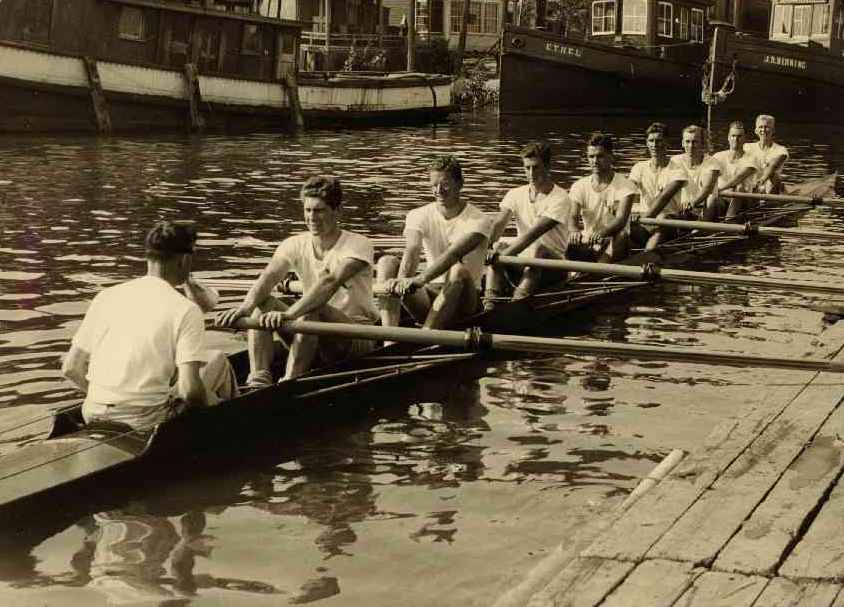From its place on the western bank at the mouth of the Credit River, the Don Rowing Club seems like it’s a long way from home.
Named for the Don River, which flows through Toronto – think Don Valley Parkway – and empties into Toronto Harbour near the Toronto Islands – the rowing club has been a much-celebrated part of Mississauga’s sports history since the early 1960s.
However, its story begins almost a century earlier.
Back in 1878, a group of young men, including the sons of baker William Christie – of Mr. Christie, you make good cookies fame – decided to establish a club on the banks of the Don River, using an empty house as their clubhouse.
Their chief rival was the Argonaut Rowing Club, which in addition to rowing, also liked to play football.
For just over 80 years the Dons and the Argonauts would race each other for national and international glory in regattas here and around the world.
However, finding and keeping space for training grounds and clubhouse proved challenging for the Don Rowing Club.
The club had the worst luck. First there was a flood that destroyed their sculls. Then there was the fire that destroyed the club house and then in 1954 Hurricane Hazel blew in.
In 1959, the Don Rowing Club had to leave Toronto after the Canadian National Exhibition expanded, filling in the waterfront and creating a 75-foot channel; ideal for pleasure craft but too crowded and choppy for the Don’s lightweight skulls.
The rowers needed a river with a decent straightaway and enough space for a new clubhouse – and that’s when Port Credit and the Credit Valley Lions Club beckoned.
Toronto rowing clubs had long used the Credit as the turnaround point for long-distance training, so in September 1961 the club moved into a new clubhouse, built by the Lions Club.

Team Canada 2024 Under 19 athletes Marianna Jankowski and Elizabeth Najjar are a doubles team to watch, continuing the Don’s championship tradition. (Photo credit: Nicole Borges)
A decade later women joined the club and soon they were dominating international podiums. Heather Hattin became the first Canadian to win a world championship – she and Janice Mason won gold at the 1987 World Championships in lightweight doubles.
Michelle Darvill won gold at the 1993 world championships in single sculls; in 2009 she became lead coach for Canada’s under 23 women’s team.
Kay Worthington moved here to train with Fred Loek, who when he wasn’t working full-time as a photographer with the Mississauga News coached eight athletes to international acclaim, including Worthington who won two golds at the 1992 Barcelona Games.
And then there were the Laumann sisters.
Older sister Danielle was Canada’s fastest singles sculler in the late 70s and early 80s, winning and earning medals at national and championships here and in the U.S. When younger sister Silken started complaining of shin splints from running track, Daniele suggested she give rowing a try and brought her down to the Don.
Together they would win bronze at the 1984 Olympic games in Los Angeles. It was Silken’s first time on an Olympic podium but of course, it wouldn’t be her last.
Silken Laumann is one of Canada’s most decorated female rowers. She was the first Canadian woman to win a world championship in single sculls in 1991. But it was in 1992 that Silken worked her way into Canadian sports history and made sports fans around the world really sit up and notice.
In May 1992 at a warm up race in Germany, a German boat collided with Silken’s, severing all the muscles, tendons and ligaments from the midpoint of her shin to her ankle.
At first, she was told she’d never race again and would forever walk with a limp.
Then the prognosis improved. With rehab she could compete again – just not at the 1992 Barcelona Olympics, because that was nine weeks away.
Neither Silken nor her coach Fred Loek accepted that diagnosis.
On August 3, 1992, Silken Laumann eased into her single skull to compete in the 2,000-metre women’s final.
It was three a.m. in Mississauga but few people were sleeping. Broadcaster CTV made a rare middle-of-the-night live broadcast for the race that attracted a national audience equivalent to a Hockey Night in Canada game.
At the halfway mark, Silken was fourth – the worst position in sports, one spot off the podium.
That wasn’t where Silken wanted to be and so, she pulled deep and won bronze.
Silken Laumann would win one more Olympic medal, a silver at the 1996 Atlanta games.
She, along with her sister Danielle and their coach Fred Loek, were all inducted into Mississauga Sports Hall of Fame, and Silken and Fred are also honoured on Mississauga’s Legend’s Row.
Today the Don continues to train everyone from beginners of all ages to elite athletes from its home on Front Street at the mouth of the Credit River in Port Credit.

The 1914 Canadian championship team. (Photo credit: Don Rowing Club)
You can hear more stories about the people and events that helped shape Mississauga via our podcast, We Built This City: Tales of Mississauga, available on your favourite podcast platform or from our website.
